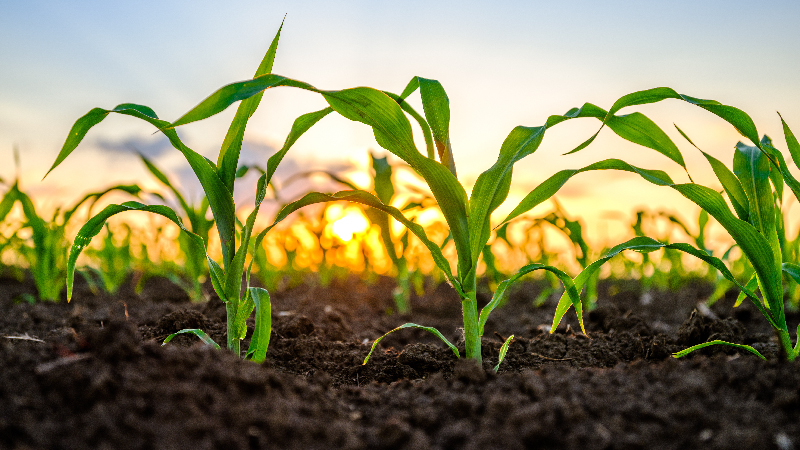Palmer Amaranth Recommendations For 2014 Growing Season
Palmer amaranth is a weed species that must be thoughtfully and carefully managed. Simply attempting to control Palmer amaranth often leads to ineffective herbicide applications, substantial crop yield loss, and increased weed infestations, said University of Illinois weed sciences researcher Aaron Hager.
“If ignored or otherwise not effectively managed, Palmer amaranth can reduce corn and soybean yield to nearly zero,” Hager said. “The threat of Palmer amaranth during the 2014 growing season is very real across a large portion of Illinois.”
The University of Illinois weed science program has developed recommendations for management of Palmer amaranth in agronomic crops. These recommendations were developed in accordance with the unique growth characteristics of this weed species. The goals of the recommendations are two-fold: to reduce the potential for Palmer amaranth to negatively impact crop yield, and to reduce Palmer amaranth seed production, which ultimately augments the soil seed bank and perpetuates the species.
Three general principles of Palmer amaranth management include:
• Prevention is preferable to eradication. Prevention refers to utilizing tactics that prevent weed seed introduction and weed seed production.
“Palmer amaranth is not native to Illinois so any population discovered in the state originated from seed that somehow was moved into the state,” Hager said. “The myriad of ways in which Palmer amaranth seeds can be transported, however, makes preventing seed introduction extremely challenging. Once Palmer amaranth populations become established, utilizing any and all tactics to prevent seed production becomes of paramount importance.”
• It is not uncommon for annual herbicide costs to at least double once Palmer amaranth becomes established. There are simply no soil- or foliar-applied herbicides that will provide sufficient control of Palmer amaranth throughout the entire growing season.
• Control of Palmer amaranth should not be less than 100%.
“In other words, the threshold for this invasive and extremely competitive species is zero,” the researcher said. “Female Palmer amaranth plants produce tremendous amounts of seed, and in less than five years a few surviving plants can produce enough seed to completely shift the weed spectrum in any particular field.”
Recommendations based on Palmer amaranth germination and emergence characteristics include:
• Be certain to control all emerged Palmer amaranth plants before planting corn or soybean. Burn-down herbicides or thorough tillage are effective tactics to control emerged Palmer amaranth plants before planting. Keep in mind, however, that glyphosate will not control glyphosate-resistant Palmer amaranth and that growth regulator herbicides (such as 2,4-D or dicamba) are most effective on Palmer amaranth plants less than 4 inches tall. If pre-plant scouting (which is especially important prior to planting soybean) reveals Palmer amaranth plants taller than 4 inches, consider using tillage instead of herbicides to control the plants.
• Apply a full rate (based on label recommendations for soil texture and organic matter content) of an effective soil residual herbicide no sooner than seven days prior to planting and no more than three days after planting. Many soil residual herbicides that are effective for controlling waterhemp are also effective for controlling Palmer amaranth. In soybeans, products containing sulfentrazone (Authority) or flumioxazin (Valor) have provided effective control of Palmer amaranth. Application rates of products containing these active ingredients should provide a minimum of 0.25 lb ai/acre sulfentrazone or 0.063-0.095 lb ai/acre flumioxazin.
Hager said growers should not rely solely on glyphosate to control Palmer amaranth. “Molecular assays have indicated that resistance to glyphosate appears to be relatively common among recently identified Palmer amaranth populations in Illinois,” he explained.
Recommendations based on Palmer amaranth growth rate include:
• Begin scouting fields within 14 to 21 days after crop emergence. “We recommend this interval even for fields previously treated with a soil residual herbicide applied close to planting,” he explained.
• Foliar-applied herbicides must be applied before Palmer amaranth plants exceed 4 inches in height. The effectiveness of most foliar-applied herbicides dramatically decreases when Palmer amaranth plants are taller than 4 inches. Postemergence herbicides that demonstrate control or suppression of Palmer amaranth include synthetic auxin herbicides (dicamba, 2,4-D), diphenylethers (acifluorfen, lactofen, fomesafen), glufosinate, glyphosate, and HPPD inhibitors (mesotrione, tembotrione, topramezone).
• Consider including a soil residual herbicide during the application of the foliar-applied herbicide. A soil residual herbicide applied with the foliar-applied herbicide can help control additional Palmer amaranth emergence and allow the crop to gain a competitive advantage over later-emerging weeds.
• Fields should be scouted 7 to 14 days after application of the foliar-applied herbicide to determine herbicide effectiveness; if the soil residual herbicide included with the post application is providing effective control; and if additional Palmer amaranth plants have emerged.
“If scouting reveals additional Palmer amaranth plants have emerged, make a second application of a foliar-applied herbicide before Palmer amaranth plants are 4 inches tall,” Hager said.
In regard to Palmer amaranth seed production, Hager said research has demonstrated that female Palmer amaranth plants are capable of producing numbers of seed comparable to that of waterhemp (several hundred thousand to over one million). “Physically remove any remaining Palmer amaranth plants before the plants reach the reproductive growth stage. Plants should be severed at or below the soil surface and carried out of the field. Severed plants can root at the stem if left on the soil surface, and plants can regenerate from stems severed above the soil surface,” he said.
Source: Illinois Ag Connection






